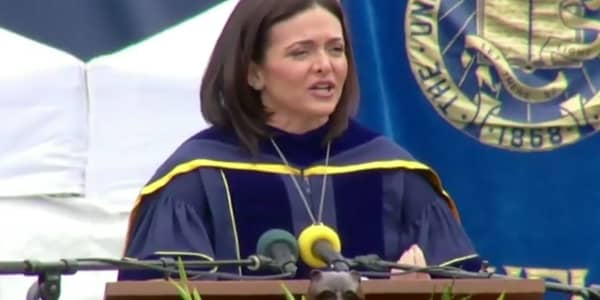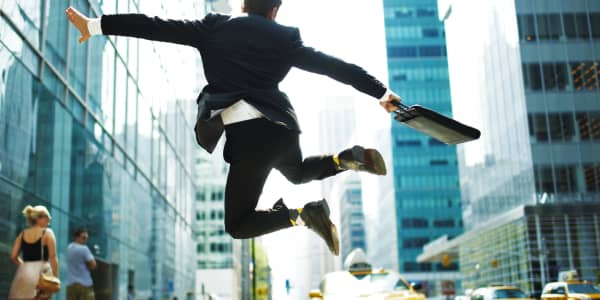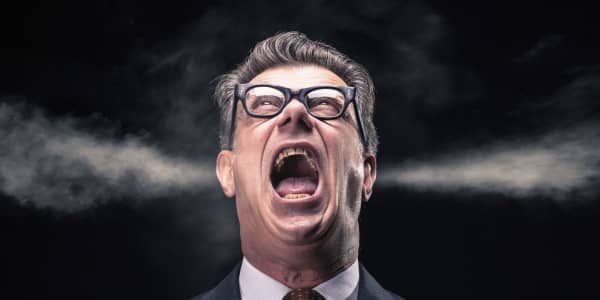California has its wine trails but what many people don't know is that Kentucky, where 95 percent of the world's bourbon is made, has a bourbon trail.
Louisville is the home of Churchill Downs and the Kentucky Derby, but the countryside outside of Louisville is dotted with rolling hills, horse farms, and more than a dozen distilleries, which invite visitors to come see how bourbon is made and do a tasting.
"There's a lot of good juice being made here," said Gary Lewis, a tour guide for Mint Julep Tours.
Indeed, there were more than one million barrels of bourbon produced in Kentucky in 2012, more than double what it was in 1999, according to the Kentucky Distillers' Association. In fact, in Kentucky, there are more barrels of bourbon than people! Their total inventory reached 4.9 million barrels last year; by contrast, there are 4.3 million people and 242,000 horses.
If you've never heard of the Kentucky Bourbon Trail, that's because it's relatively young. They've been distilling their grains into whiskey in Kentucky since the first settlers arrived in the 1700s but the bourbon trail wasn't formed until 1999.
One of the first things you'll learn is that all bourbon is whiskey but not all whiskey is bourbon. To be called bourbon, it has to meet several strict legal standards, including the fact that it must be at least 51 percent corn and it must be made from a brand-new, charred white oak barrel. That charring is how the liquid gets its amber color.
The folks over at Jim Beam like to say, "Bourbon is kinda like whiskey's 'sweet spot'…because corn is a sweet grain. The more corn, the sweeter the whiskey."
And, while you may get a wide variety of tasting notes when you sip bourbon—from honey and spice to tobacco and oak—nothing can be added to bourbon in the distilling process to flavor it. The only thing you can add is water—otherwise, you've lost the right to call it bourbon. That's why you'll notice new varieties such as Jim Beam's Red Stag or Wild Turkey's American Honey are never actually called bourbon. They call it a liquor, where one ingredient is bourbon.
Jack Daniels? It's largely identical to bourbon except for one key difference: It's filtered through maple charcoal. That's why they call it a Tennessee whiskey not a bourbon.
(See more: Flaming barrels and Kentucky champagne: Photos from the Kentucky Bourbon Trail)
Perhaps the most important thing you need to know is: It's not that kind of drink. Bourbon is a drink to be sipped, not shot like the firewater of our youth, so if you're hoping to drink large quantities or get drunk, the bourbon trail is not for you. That's what porches and La-Z Boys are for, son.
"Bourbon isn't something you can rush. You make it, you sit back and you wait," said Lewis—and that's how you drink it, too.
If you live nearby, perhaps the best way to experience the distilleries is to do one at a time and savor the experience like a glass of Blanton's neat on a crisp, fall day. If you don't have that luxury, you will probably only want to hit two or three in one day—two full tours with tastings and a third just for the tasting, with lunch in between.
You can make your own reservations and drive there yourself or sign up for a tour through companies like Mint Julep Tours and R&R Limousine, where you're provided with a designated driver, who is also knowledgeable about bourbon, the distilleries and Kentucky.
If you go the tour route, you can do a public tour with anyone else who signs up, which at Mint Julep is $99 (plus the cost of lunch and distillery admissions), which takes seven to eight hours and includes three distilleries. Or, you can do a custom tour, where the cost varies depending on the number of distilleries you're going to and how many people are on your tour. R&R Limo offers a three-hour trip to Jim Beam for as many as eight people for $270, or $330 if you add lunch. If you had eight people, that would make it anywhere from $34 to $41.25 per person.
You can choose which distilleries to go to based on your favorite bourbons or by the personality/experience offered at the distillery. Like bourbon drinkers themselves, each distillery has its own distinct personality—some feel like a day at the country club or Derby, while others feel like a down-home cabin in the country. The tastings also vary at each—some only offer one type of bourbon after the tour, while others offer two or more.
There are only eight distilleries on the official Kentucky Bourbon Trail: Four Roses, Heaven Hill, Jim Beam, Maker's Mark, Town Branch, Wild Turkey, Woodford Reserve and Evan Williams. However, other distilleries offer tours so if you want to visit one that's not on the official trail such as Buffalo Trace, which makes Blanton's, Eagle Rare and Van Winkle, among others, then you should go with a custom tour.
Geographically, the distilleries can be pretty spread out. They can be anywhere from eight to 74 miles apart. So, if you're doing more than one in a day, location may be the deciding factor. They tend to be grouped into two regions: those east of Louisville, and those south of Louisville. This handy map shows you where they are and offers a chart of how many miles are between the distilleries.
On the tours, you'll see bubbling mash fermenters that are the size of above-ground pools, where the grains are fermented. At this point, it's basically "beer without the hops," Lew Bryson wrote in "Bourbon for Dummies." They'll let you taste it but it tastes like flat funky beer so you may want to pass. (And just in case you get any funny ideas, they've got a sign by their fermenters at Buffalo Trace that says, "No swimming.")
You'll also get to see the giant metal stills where the bourbon is stilled, which are made of copper at Woodford Reserve. At some, they'll let you taste the clear bourbon before it hits the barrel, which Bryson explained, "tastes like sweet corn lightning."
And then, there's the bourbon lover's Holy Grail: The warehouses full of shelves of barrels of bourbon as far as the eye can see. At Buffalo Trace, they have a cool secret bookcase that leads to one of their storage facilities. Some of their storage buildings have bars on the windows. Were they once used as prisons? Nope. That's to, um, keep the bourbon from … escaping, explained tour guide Freddie Johnson, a third-generation employee at Buffalo Trace.
You'll also get to see the bottling facilities, which at places like Buffalo Trace where they have brass stoppers of jockeys on horses that are sealed on with wax, are pretty cool. Plus, a tasting at the end of each tour.
One interesting note about the Blanton's stopper: There are eight different stoppers, each with the horse and jockey in a different position. Beneath the back leg is a letter, a "B," an "L," an "A," etc.—put them all together and they spell Blanton's and act like an old zoetrope, where a rapid succession of pictures turns into a movie. In this case, it turns into a racing horse.
Buffalo Trace also sells used barrel staves (thin pieces of the charred wood from an old bourbon barrel) with holes drilled out so you can display all the stoppers one after the other.
Given that nothing can be added to bourbon except water to flavor it, bourbon gets 50 to 60 percent of its flavor from the barrel itself. So, a cool thing to add to your itinerary is a tour of the Brown-Forman Cooperage in Louisville, where the barrels are made for the company's bourbons, which include Jack Daniels, Woodford Reserve and Old Forrester.
"The aromatic smells are the best part of the tour," said Brown-Forman Master Distiller Chris Morris. "By toasting and charring these barrels, we activate natural flavors and aromas in the wood which give our spirits such distinct tastes."
Of course, that's what the distiller would say. Another great part of the tour? Two words: Flaming barrels.
The char on a barrel is what gives bourbon its flavor—and color. So, you'll actually get to see the barrel-making process from beginning to end, including when they set the inside on fire to char it.
(Read more: 10 things you didn't know about Kentucky and bourbon)
"People don't realize when bourbon goes into the barrel, it's completely clear. When it comes out, it gains 100 percent of that color—that golden brown comes from that barrel," said Svend Jansen, a spokesperson for Brown-Forman. "And there's different char levels for our various brands. Jack Daniels has a certain char level. Woodford Reserve has a proprietary char level. We can dial the char up or dial it down based on what we want for that particular brand," he said.
If you recall, barrels can only be used once for making bourbon but don't fret, environmentalists! Bourbon barrels go on to have long, fascinating lives. Some get shipped to Mexico for aging tequila or Scotland for aging Scotch (there are no one-time barrel-use rules for those liquors) or to food companies for storing everything from coffee to tobacco and maple syrup. Brown-Forman makes other liquors besides bourbon, so some of its bourbon barrels are used to age the company's whiskeys, including Early Times and Canadian Mist, while others, such as the barrels used to age Jack Daniels, find a second life storing hot sauce. For the best infographic you'll see all day, check out Mutineer Magazine's, "The Secret Life of Bourbon Barrels."
The other component, of course, is water. If you've found yourself asking "Why Kentucky?" through any of this, here's your answer: Kentucky has great soil for growing corn, the primary grain in bourbon and it sits on a limestone shelf, which means the water has a natural filter that makes it iron-free and calcium-rich—perfect for making bourbon.
"Much has been said about Central Kentucky's water. It's famous for making fast horses, pretty women and good bourbon. (We've also heard it has: pretty horses... but the good bourbon never changes.)," the folks at Jim Beam like to joke.
The distilleries are limited in the amount of bourbon they can serve, so the tasting part of the tour may be a little on the short end for some. If you're looking to up your palate's game, there are a ton of bourbon classes offered in Louisville. The University of Louisville offers a class called Bourbon 101 and there are several academies for higher bourbon learning including the Filson Bourbon Academy, Woodford Academy and the one that will give you the most street cred with your friends—Moonshine University.
Kentucky geographically is in the middle of the U.S., just below Indiana, but it is undoubtedly a southern state, so you're going to get an extra serving of Southern hospitality on your tour of bourbon country.
"I think it's important to let our bourbon lovers come to Kentucky and see where their favorite bourbon is made," said Fred Noe, master distiller at Jim Beam, who also happens to be James Beam's great grandson, in a YouTube interview with Kid Rock. "They'll come as friends but leave as Beam family members." (Rock, incidentally, is a spokesperson for Jim Beam's Red.)
Beyond the standard tours, some of the distilleries offer VIP experiences, including Jim Beam's VIP Super Premium Tour, which for $199 a person includes a private meeting with Noe and a bourbon-themed meal on the porch of Knob Creek House, plus your own commemorative etched bottle to take with you.
And, if you have the cash to drop, you can even buy a barrel of bourbon from a distillery. It costs anywhere from $5,000 to $15,000 and you get anywhere from 180 to 220 bottles out of it, depending on how much was lost to the "angel's share." That's the amount that evaporates each year as the barrel ages.
"That's one of the coolest things," Lewis said. "You get to sit around with the distiller and sample different barrels until you find the one you like."
Then, they'll bottle it and send it to you.
The gift shops at each distillery are not to be missed—each one has gifts that are unique and that you're not likely to find anywhere else. Woodford Reserve, for example, sells copper shot glasses and shakers, Buffalo Trace sells mini-Blanton's bottles and Wild Turkey sells Wild Turkey-branded turkey callers, as well as a variety of camouflage and blinged-out gear.
The Kentucky Bourbon Trail issues bourbon trail passport and if you get stamps from each of the distilleries on the trail, they'll send you a free T-shirt.
The city of Louisville also has an Urban Bourbon Trail, and yes, they also issue a passport. It's chock full of information, but the best part is a Bourbon Bucket List for you to start checking off—and add to. If you get enough stamps on your Urban Bourbon Trail passport, bring it to the Louisville Visitors' Center and they'll not only give you a free T-shirt and an "Official Citizen of Bourbon Country" certificate to commend your outstanding achievement in bourbon arts. Oh, and if you ask nicely, they'll also let you take a picture with the life-size statue of Kentucky Fried Chicken's Colonel Sanders!
There are more bourbon offerings in this city than you could ever imagine, including some of the finest bourbon cocktails you'll ever drink. Yes, of course, perfectly crafted mint juleps but also some cocktails you might have never heard of like Kentucky champagne at Harvest restaurant, which is made of bourbon, Tuaca, the local soda Ale 8 and a lemon peel and pairs nicely with the brioche French toast with bourbon-vanilla custard, to the Bisontini at the Brown Hotel, which is Buffalo Trace's cream liqueur, bourbon and a hint of nutmeg.
Do you love bourbon so much you'd bathe in it? Well, now you can: At the Butchertown Market (yes, this is a stop on your Bourbon Bucket List), they sell all kinds of bourbon bath products, including bourbon lotion, bourbon soap, bourbon shower gel and even bourbon candles, made by a company called Moss Hill.
Down here in these parts, they make everything with bourbon, from bourbon coffee and bourbon smoked sea salt to Kentuckyaki (yep, teriyaki bourbon), which they sell by the gallon, and even chopped up bourbon barrel wood to throw on your grill or smoker.
Or, if you're chatting up a local, you can learn how to rock it Kentucky-style: Fill a spray bottle with bourbon and spritz your meat periodically as it cooks. What type of meat—chicken? steak?
"Any meat," Lewis said.
Bourbon and barbecue—it doesn't get much better than that. And once you leave here, you'll have a far better understanding of how to enjoy both!
—By CNBC's Cindy Perman. Follow her on Twitter @ponyblog





